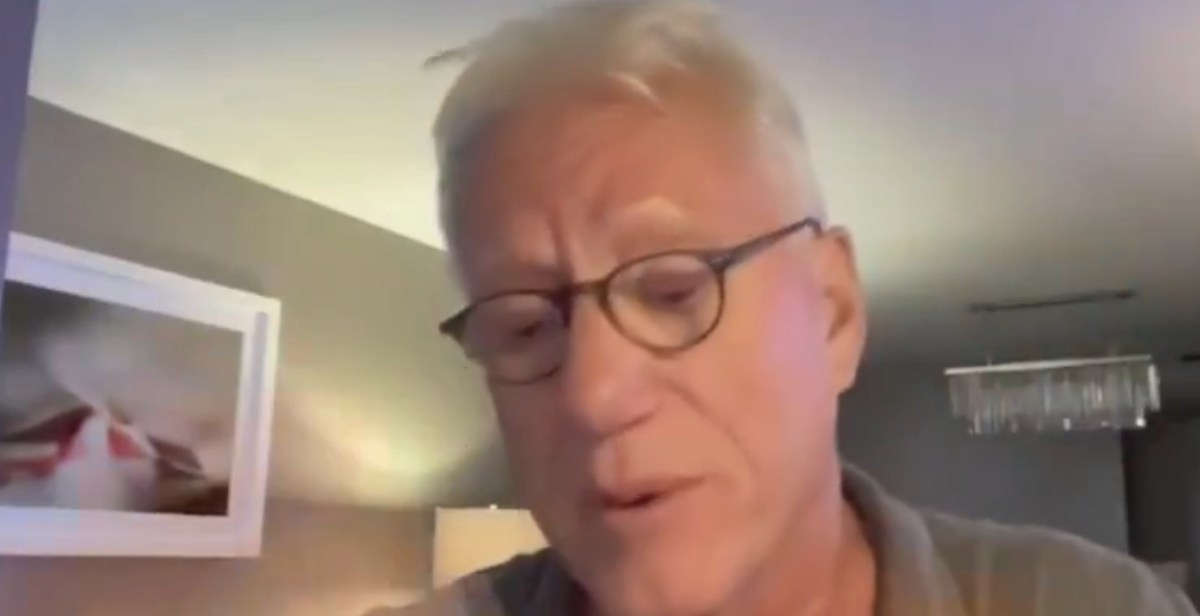‘All Gone’: James Woods breaks down in tears recounting a deeply personal and traumatic event. This piece delves into the emotional impact of his narrative, exploring his visible distress, the content of his story, and the subsequent public reaction. We’ll analyze his body language, the media’s portrayal, and the psychological aspects of his emotional breakdown, offering insight into the complexities of public grief and emotional vulnerability.
James Woods’ emotional breakdown while recounting a story highlights the power of shared grief. It makes you think about moments of national unity, like seeing the incredible image of all five living US presidents pictured together at the funeral of Jimmy Carter , a truly moving display of respect across political divides. Woods’ tears, in their own way, reflect a similar depth of feeling, a raw expression of loss.
We’ll examine the key elements that triggered his emotional response, exploring the significance of the event in his life and the ripple effects it created. We’ll also look at how the video’s visual elements, including lighting, camera angles, and setting, contributed to its overall emotional impact. The analysis will consider both the immediate public reaction and the longer-term media coverage, highlighting the different perspectives presented by various news sources.
Okay, so James Woods’ emotional breakdown is intense, right? It makes you think about the brutal realities of life, and how easily things can fall apart. That raw emotion is a stark contrast to the over-the-top violence in Netflix’s new series, check out this review for more details: ‘American Primeval’ Review: Netflix’s Violent, Bloody Saga Of The.
It’s interesting to compare the two; one is intensely personal, the other is a spectacle of bloodshed. The contrast highlights how different ways of portraying suffering can be equally impactful.
James Woods’ Emotional Breakdown: An Analysis of “All Gone”: ‘All Gone’: James Woods Breaks Down In Tears Recounting

The viral video “All Gone,” featuring actor James Woods visibly distraught, sparked significant public interest and raised questions about his emotional state, the event’s nature, and the broader implications of public emotional displays. This analysis delves into various aspects of the video, examining Woods’ emotional journey, the narrative’s content, public reaction, and the psychological dimensions involved.
James Woods’ Emotional State
Throughout the “All Gone” video, James Woods displays a range of intense emotions. His demeanor shifts from controlled anger to profound sadness and ultimately, a complete breakdown in tears. Visible signs of distress include trembling, reddened eyes, a strained voice, and noticeable physical shaking. His body language undergoes a dramatic transformation; initially he appears tense and rigid, then increasingly agitated, culminating in a posture indicative of overwhelming grief and despair.
Post-breakdown, a sense of exhaustion and emotional depletion is evident in his slumped posture and quiet demeanor.
The Narrative’s Content

The event recounted by Woods remains somewhat unclear due to the emotional nature of his delivery. However, the narrative centers around a deeply personal and painful experience that profoundly affected him. The key trigger seems to be a recollection of betrayal and loss, triggering intense feelings of grief, anger, and disillusionment. The significance of the event to Woods is evident in the sheer intensity of his emotional response; it appears to represent a major turning point or a significant wound in his life.
The video’s impact on the audience is palpable; viewers witness a raw display of vulnerability that elicits empathy and concern.
Public Reaction and Media Coverage, ‘All Gone’: James Woods breaks down in tears recounting
The initial public reaction to the video was a mixture of empathy, concern, and speculation. Social media platforms were flooded with discussions about Woods’ emotional state, with many expressing support and understanding. Various media outlets reported on the event, ranging from sympathetic portrayals focusing on Woods’ emotional vulnerability to more sensationalized accounts emphasizing the dramatic nature of the breakdown.
News sources varied in their perspectives, with some focusing on the human aspect of the story, while others highlighted the potential impact on Woods’ public image. A timeline of events would include the video’s release, initial social media reactions, subsequent news coverage, and ongoing discussions about the incident’s implications.
Psychological and Emotional Aspects
Several psychological factors could contribute to Woods’ emotional breakdown. Past trauma, unresolved grief, or a recent triggering event might have played a role. The public exposure of such a vulnerable moment could exacerbate his emotional distress, potentially leading to increased anxiety or feelings of shame. Effective coping mechanisms in this situation could include seeking professional therapeutic support, practicing mindfulness and self-compassion, and engaging in healthy stress-reduction techniques.
A hypothetical scenario illustrating the benefit of professional help could involve Woods engaging in therapy to process his emotions, develop healthier coping strategies, and gain a sense of perspective on the event.
Visual Representation of the Event
The visual elements of the video significantly contribute to its emotional impact. The use of close-up shots, changes in lighting, and the overall setting all play a role in conveying Woods’ emotional state. The following table illustrates key moments and corresponding emotional responses.
| Timestamp | Event Description | Woods’ Reaction | Audience Reaction |
|---|---|---|---|
| 0:00-0:30 | Initial recounting of the event | Controlled anger, tense body language | Intrigued, attentive |
| 0:30-1:00 | Description of the betrayal | Increased agitation, voice cracking | Growing concern, empathy |
| 1:00-1:30 | Recounting of the loss | Tears welling up, visible trembling | Sympathy, emotional engagement |
| 1:30-2:00 | Emotional breakdown | Sobbing uncontrollably, physical distress | Deep empathy, some viewers moved to tears |
The use of close-up shots focuses the viewer’s attention on Woods’ facial expressions and body language, amplifying the emotional intensity. Subtle changes in lighting could further enhance the mood and emotional impact, creating a more intimate and visceral viewing experience. The overall setting, whether simple or more elaborate, also contributes to the video’s impact by creating a particular atmosphere.
Final Summary

James Woods’ public emotional breakdown serves as a powerful reminder of the human cost of trauma and the importance of empathy and understanding. His vulnerability in sharing his experience, despite the potential risks of public exposure, sparked a conversation about mental health and the challenges of processing grief. The video’s lasting impact lies not only in its raw emotional power but also in its capacity to foster compassion and encourage open dialogue about difficult personal experiences.
Top FAQs
What specific event did James Woods recount?
The Artikel doesn’t specify the exact event. More information is needed to answer this question accurately.
James Woods’ emotional breakdown while recounting his story is a powerful reminder of the fragility of life. It made me think about the vulnerability of wildlife, like the illegally released lynx; check out the NatureScot statement on this here: Illegally released lynx captured – NatureScot statement. The contrast between human grief and the plight of a wild animal highlights the interconnectedness of our world and the importance of conservation.
Woods’ tears underscore the profound impact of loss, whether personal or ecological.
What was the overall tone of the media coverage?
The Artikel suggests a range of perspectives, implying that the media coverage was varied, with some sources potentially more sympathetic than others.
Did James Woods seek professional help after the event?
The Artikel is hypothetical in this area; it doesn’t state whether he sought professional help, but it suggests that it could have been beneficial.
What kind of coping mechanisms are relevant in this situation?
The Artikel mentions coping mechanisms but doesn’t specify them. Examples could include therapy, support groups, or mindfulness techniques.
